What is UX Research?
The Complete Guide for UX Researchers
Part – II
Conducting UX Research
UX research is crucial for creating products that meet user needs, but it can be easy to prioritize other tasks over research. When research is only conducted in response to specific situations or problems, it’s often too late to use the insights gained to shape product design. This can result in incomplete or inadequate research, and a missed opportunity to create a product that truly meets user needs.
Start with a solid user experience (UX) research process right away, instead of waiting for problems to arise. In this article, we’ll dive into the UX Research methods, and UX Research tools, and you will find a 5 step by step research process to guide your product development and design thinking and create a great customer experience.

UX Research Methods

Discover

EXPLORE

TEST

LISTEN
Discover
The discovery stage is all about shedding light on what we don’t know.
- What features are missing from the product?
- What issue(s) should our product address?
- What do our customers require?
- What information do we require to get off to a good start?

“I get to discover what no one else in the company knows. I get to learn something new every day and build something to help them achieve their goals.”
-Grant Baker, UX Designer at Paycom
Listed below are the discovery research methods to develop new features and products, validate or eliminate assumptions, and present reliable data to the developers.

Stakeholder interview

Field Studies
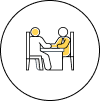
User interview

Diary Studies

Ethnographic Field Studies

True Intent Studies

Intercept Surveys
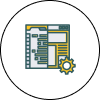
Competitive Testing
Explore
During the exploration stage, the emphasis is on understanding the problem that needs to be solved, determining the project’s scope, and effectively addressing user needs.
To achieve this, we gather information by examining the products and features offered by competitors, creating user personas to represent our target audience, crafting user stories that detail user interactions, and conducting design reviews to ensure our solution meets user needs.
Several commonly utilized techniques during the exploration stage include:

Design Reviews
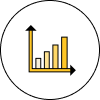
Task Analysis

Journey Mapping

Competitive Analysis

Prototype Testing

Card Sorting
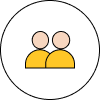
Persona Building

Writing User Stories
Test
Tests and other validation methods are employed to assess the effectiveness of our designs during the development process.
Below are the research methods for the testing stage:
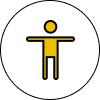
Accessibility Evaluation

Tree Testing
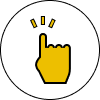
Intercept Testing

A/B Testing
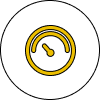
Benchmark Testing

Qualitative Usability Testing
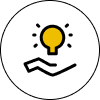
Concept Testing
Listen
The listening stage is a continuous process throughout the entire UX design cycle. It involves gathering data and closely
monitoring all relevant information pertaining to the product, in order to comprehend existing issues and identify any new ones.

“Listening to people talk about super techie stuff that we build in such simple everyday language. Very humbling. Put things in perspective and keeps you grounded.”
-Archana Vaidyanathan
The following are the main methods for the listening stage:

Customer Feedback
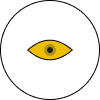
Eye tracking
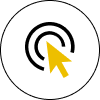
Clickstream analysis
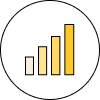
Analytics Review

Participatory design

Usability bug review

Search log analysis

Surveys
Why You Need a Solid UX Research Process for Better Design?
Failing to implement a strong UX research process can result in dissatisfied users, decreased conversion and customer loyalty rates, high error and churn rates, and expensive redesigns. Relying on assumptions instead of research can lead to negative outcomes for both users and the business, affecting team morale and overall objectives.
5 steps for conducting User Research
“User Research is actually the way by which designer is able to step into the shoes of the user and go along his or her path feeling all the stones on the way.”
-Tubik Studio, Digital Studio
Define your Objectives
To begin, you should develop hypotheses and topics of interest related to the potential problems or opportunities you want to investigate. These can come from prior research, new ideas, or brainstorming sessions.
Next, identify the key UX research questions that you want to address. These could focus on user behavior, such as why customers abandon their shopping carts, different UX design options, like which CTA performs the best, or customer goals,like which features would enhance their experience the most.
After defining your UX research goals, it’s important to align them with the larger objectives and metrics of your organization. For example, how will reducing cart abandonment impact revenue and conversions?
It’s also crucial to communicate the importance and goals of your UX research to key stakeholders to gain their support and ensure the research’s impact is maximized.
Hypotheses
It’s common for designers to have initial ideas and assumptions about their product, and clients may also have hypotheses they want to be tested.
UX research uses hypotheses to guide the study by predicting how users might respond to a feature, design element, or product. These predictions help researchers focus their efforts and develop appropriate research questions and testing methods. Three common types of UX research hypotheses include attitude-related, behavior-related, and feature-related hypotheses.
- Attitude-related hypotheses – Focus on user feelings about a product or feature. For example, “Users will find the new feature frustrating because it is too complex.” Testing involves user surveys or interviews.
- Behavior-related hypotheses – Focus on user actions when using a product or feature. For example, “Users are more likely to complete the checkout process if it requires fewer clicks.” Testing involves user testing and analysis of user behavior data.
- Feature-related hypotheses – Focus on specific features or design elements and how they might impact user experience. For example, a feature-related hypothesis might be “Including product reviews on the product page will increase user trust and lead to higher conversion rates.” Testing this hypothesis might involve conducting A/B testing to compare
conversion rates with and without product reviews on the page.
Determine Your Research Approaches
After establishing your goals and user questions, determine the specific research methods you will employ and the data you will
collect. Employ a diverse range of methods to ensure comprehensive coverage and address any potential gaps in your research.
The choice of methods should be informed by your business and user requirements, as well as your available resources.
To ensure comprehensive UX research, it’s important to use both behavioral and attitudinal research methods.
- Behavioral research – Involves observing user actions through techniques like heatmaps, A/B testing, user recording and eye-tracking.
- Attitudinal research – Focuses on user thoughts and feelings and may include surveys, focus groups, customer interviews, concept testing, and card sorting.
Using only one of these methods would result in incomplete insights, as user behavior and attitudes don’t always align.
By combining both types of research, you can gain a more complete understanding of user needs and preferences.
It’s important to incorporate both qualitative and quantitative UX data in your research process.
- Quantitative data – Involve analyzing numerical data on user behavior, such as the number of clicks on a button or the percentage of users who abandoned their carts. This approach helps identify patterns in user engagement, retention, clickthrough, and conversions.
- Qualitative data – Delves into the underlying reasons for the patterns observed in quantitative data. It provides valuable insights into what users are truly thinking and feeling, helping you gain a deeper understanding of their needs.
Conduct
Additionally, the researcher may analyze user data from the website’s analytics platform to gain insights into user
behavior patterns.
Synthesis
Once the data has been collected, the next step is synthesis. Synthesizing findings involves taking the data collected from
research and turning it into useful insights that can inform design decisions.
For example, a UX researcher conducting user interviews might identify a pattern that users struggle with a particular feature.
Synthesizing this finding could involve creating a design solution that simplifies the feature or provides additional guidance for
users.
Final Thoughts

“Creating an interface is much like building a house: If you don’t get the foundations right, no amount of decorating can fix the resulting structure.”
-Jef Raskin
To sum up, the main goal of user experience research is to gain valuable insights and understanding of user needs, preferences,
and behaviors when interacting with a product. This helps designers to create solutions that are tailored to the user, rather than
designing for their own preferences or assumptions. Through research, designers can obtain contextual information that informs the design process and improves the user experience.
If you’re looking to learn more about UX research, explore these articles:
What is UX Research? The Complete Guide for UX Researchers
(Part 1 – Introduction to UX Research)
Don’t miss out on the opportunity to unlock the full potential of your product! Start your journey with Kavinu Designs today and let us help you discover new insights and create an exceptional user experience that your users will love.

Get in touch with us today to explore how we can assist you in achieving your desired UX outcomes.
